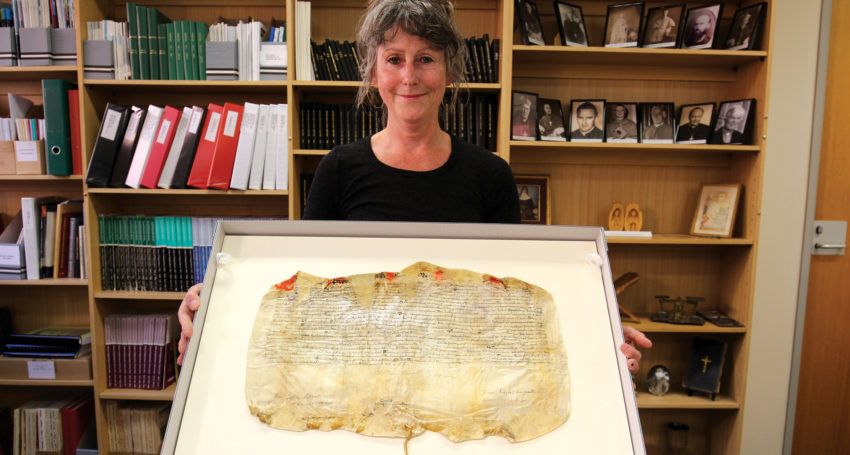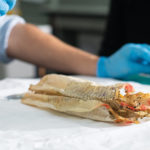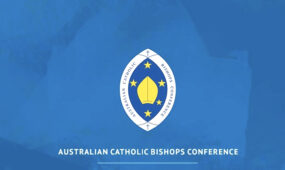Vatican parchment comes home
News
A papal bull appointing Matthew Beovich as Archbishop of Adelaide has been painstakingly conserved and returned to its home in the Adelaide Archdiocese Archives.

Damaged on its way to Australia in 1939, the parchment document was a “mass of pulp” when it was salvaged from a plane crash in the Java Sea and opened by Church authorities in Canberra.
Although it was dried and treated in time for the episcopal ordination and installation of Archbishop Beovich on April 7 1940, the document deteriorated over the ensuing eight decades to the point where it was extremely brittle, deformed and impossible to read.
Advertisement
Archdiocesan archivist Lucy Farrow approached Artlab Australia for conservation advice and expertise. In a stroke of luck, the conservation treatment was assigned to principal conservator Roberto Padoan who previously worked for the Vatican Secret Archives in Rome.
Lucy said she was “amazed” by the results of his work, particularly considering how brittle the parchment was and its eventful history.
A bull is the highest rank of document produced by the Vatican chancery. For the past 600 years papal bulls have been produced with little changes in their materials, execution techniques and diplomatic text.
The term ‘bull’ comes from the Latin word bulla meaning seal, most frequently made of lead. The seal features the name of the pope on one side and the embossed images of St Peter and St Paul on the other, to replicate the design of the papal ring.
Lucy provided Artlab with vital information about the conservation history of the document, gleaned from the diary of Archbishop Beovich.

The parchment before being treated.
Parchment is a skin-based material that can last for thousands of years if kept at the right climate conditions but in this case the document was exposed to extremely high temperatures and was fully immersed in salt water.
“This dramatic combination of events brought the edges of the parchment to an irreversible stage of gelatinisation causing the rest of the document to shrink and lose flexibility,” Roberto said.
The conservation treatment at Artlab included relaxation under controlled humidity, stabilisation of tears and missing areas with Japanese paper, tensioning on a frame, infillings and mounting on a rigid board.
The relaxation and tensioning stages were carried out slowly, over a period of three months, allowing the parchment to gradually adapt to changes.
Lucy said the papal bull would be put on display in coming months.








Comments
Show comments Hide comments